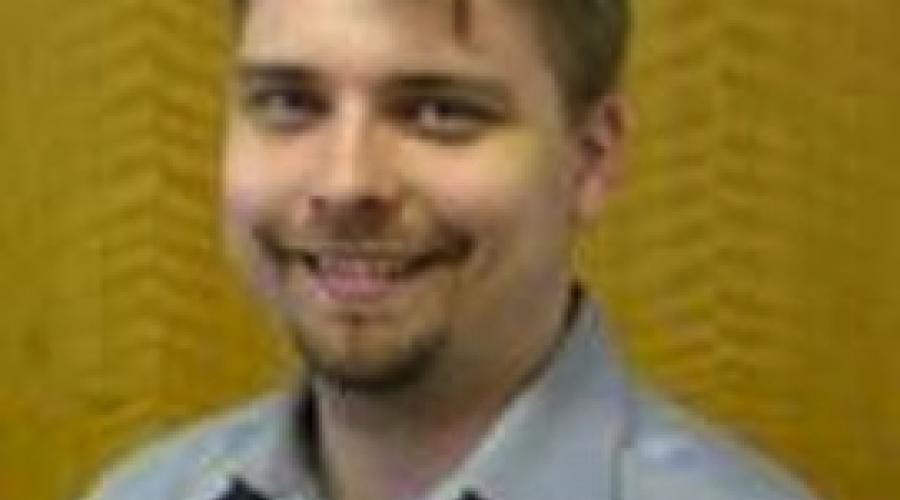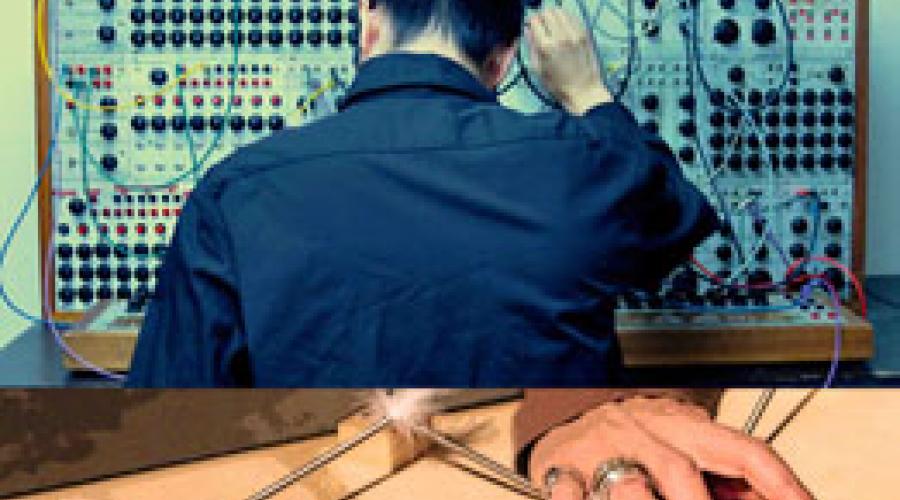Archive
CNMAT Flashback
A look back at some items in our archives.
James FEI + Laetitia SONAMI
Improv Weekend: Presentations
Archive Browser
PIC18F455x Create USB Interface
# Cost:
About $50.
# Information:
[http://www.create.ucsb.edu/~dano/CUI/]
# Pins:
- /a/4 -- Digital
- /b/6,7 -- Digital
- /c/0 -- Digital
- /c/1,2 -- Digital, Hardware PWM
- /c/6,7 -- Digital, TTL Serial
- /d/0-7 -- Digital
- /an/0-12 -- Analog
- /an/10 -- I2C Clock
- /an/12 -- I2C Data
- /pgm -- Digital Input-only (physically maps to
Hardware PWM
Enables 2-channel hardware pulse-width modulation control on pins C1 and C2. This can be used to control brightness of LEDs or digital-to-analog conversion.
SPI
The SPI module is mostly written but still untested. This is some preliminary documentation.
--------
**/spi/enable**
Turn on/off.
------
**/spi/rate**:
Configure clock rate. Fosc /4, /16, /64.
-------
**/spi/mode**:
Configure the transmission waveform. See spec sheet.
- Mode 0: Clock default low, falling edge on data transmit.
- Mode 1: Clock default high, rising edge on data.
- Mode 2: Clock default low, rising edge on transmit
- Mode 3: Clock default low, falling edge on transmit
Developer Tools
- General Utilities:
- [w:Subversion] repository client.
Recommendation: svnX for Mac OS/X, TortiseSVN for Windows
- catserial.py -- utility for dumping serial port output (in the repository)
- slipserial.py -- utility for dumping a serial slip stream (in the repository)
- A Windoze machine (optional, for some hardware tools)
- USB Analyzer: [cnmat:node/5964]
Subversion Repository
The repository for uOSC is located here; this URL is to be put into your SVN client, not for use in a web browser.
- https://cnmat.berkeley.edu/svn/repository/uosc
A friendly "web-view" front-end is here; this will show you the files and commit logs, but does not allow you to perform any actual manipulations on the code.
- https://cnmat.berkeley.edu/svn/view/uosc
Contents overview:
uOSC.PIC Source Code Overview
# system/typedefs.h
Defines byte, word, LSB, MSB, etc.
# autofiles/usbcfg.h
Select which variant target to build for (CUI, Bitwacker, etc)
# autofiles/usbdsc.*
Contains the USB descriptor table
# io_cfg.h
Defines pins, pin counts, enable individual modules
# main.c
Starts the program when USB enumeration is completed
# user.c
Contains the main loop of program and i
PIC18F Hardware
- 5V supply
- Tosc = 48 Mhz clock, Fosc = Tosc / 4 = 12 Mhz instruction rate.
- Program memory: Up to about 16k ROM.
- RAM: 2048 bytes:
- 256 bytes for stack
- 512 bytes for micro-OSC buffers and other data
- 512 bytes for USB endpoint buffers
- 768 bytes for heap
- 16 digital I/O
- 13 analog in
- 4 hardware timers (internal clock, interrupts)
- 2 PWM out / CCP in
- 1 T
Module Development
Read the source code! Read it again. This is a very concise overview...
1. Make a MODULE\_ENABLE macro flag (io\_cfg.h) -- all of your code should be #ifdef conditional on this flag.
2. Make a file for low-level functions, e.g. user/mything.c
3. Make a file for handling the OSC dispatch, e.g. user/osc\_node_mything.c
4. Define the OSC schema (osc\_schema.c)
5.
OSC Message Handling
# Unpacking
This can be done in a node dispatch routine. Variables of note:
- osc\_message\_in\_argc : how many arguments in the typetag section
- osc\_message\_in\_len : total message length
- p\_osc_message\_in : pointer to start of message
- p\_osc_message\_in\_tt : pointer to start of typetags (after magic comma)
- p\_osc_message\_in\_data : pointer to start of data section
For figuring out which method was matched in a large tree of nodes:
SLIP Encoding and Decoding
# SLIP special characters:
#define SLIP_END 0300 // indicates end of packet -- decimal 192
#define SLIP_ESC 0333 // indicates byte stuffing -- decimal 219
#define SLIP_ESC_END 0334 // ESC ESC_END means END data byte -- 220
#define SLIP_ESC_ESC 0335 // ESC ESC_ESC means ESC data byte -- 221
# Double-EN
Tuesday
+ Tuesday: Gestural Control
- Guest: Keith McMillan (Zeta Music, Octav, TrioMetrik, Beam Foundation, ...)
- Controller museum
+ Gestural Control: CNMAT's online database of controllers
+ History, Benefits and the Present
+ Connectivity
- MIDI
- USB
- OpenSoundControl
- Analog signals
- Audio-
Wednesday
+ Wednesday: Modularity
- Guest: David Zicarelli (Cycling 74)
- Abstractions/Encapsulation
- Arguments and Attributes
- poly~
+ Building Interfaces
- bpatcher
- pvar
- presentation mode
- jsui
- Big Patch: probablistic, harmonic cloud maker
+ From Tuesday...
+ Audio Analysis
+ Real-time Analysis Tools
- fidd
Build Configuration
- In MPLAB, select Configure > Select Device, then choose the appropriate processor
- Edit 18fxxxx.lkr and change FILES line to appropriate target processor library
- Edit autofiles/usbcfg.h and change the #define to point to the new target platform (Bitwacker, CUI etc).
I2C
Implements synchronous master-mode I2C control at 100khz or 400khz (default). Optional "nunchuck" mode automatically polls and decodes data from an attached Wii Nunchuck.
The I2C clock is pin AN10 / B1. I2C data is pin AN12 / B0.
**NOTE:** I2C "open-drain" requires a pull-up resistor placed between the SCL and V+, SDA and V+ (typically, 1-4k ohms).
Thursday
+ Thursday: CNMAT, Sofware, Tools, Resources
- Guest: David Wessel (CNMAT)
+ CNMAT Tools part 1
- see CNMAT's downloads page and the Max/MSP/Jitter Depot
- see CNMAT's
Sensor Workshop 2008 Comments and Evaluations
How was your workshop experience?
What do future students need to know about it?
General Audio-Visual Resources
These are not Jitter-specific, but are useful for information and inspiration.
Contemporary Installations/Performances
Actop: http://www.actop.net/
Richard Bailey: http://www.imagesavant.com/
Benton-C Bainbridge: http://www.benton-c.com/
Steve Beck: http://www.stevebeck.tv/
Coldcut: http://www.coldcut.net/coldcut/
Dienststelle: http://www.dienststelle.de/
D-Fuse: http://www.dfuse.com/
Scott Draves: http://draves.org/
Granular Synthesis: http://www.granularsynthesis.info/
Peter Greenaway:
Contemporary Animations
J. Walt Adamczyk: http://www.johnadamczyk.com/filmvideo.html xvid
Bill Alves: http://www2.hmc.edu/~alves/
Bret Battey: http://www.mti.dmu.ac.uk/~bbattey/
Michael Betancourt: http://www.michaelbetancourt.com/art/telemetry/
Classic Audiovisual Authors
[http://www.baranoffrossine.com/museum/index.cfm?SelectLang=English|Wladimir Baranoff-Rossine]
[http://www.centerforvisualmusic.org/Belson|Jordan Belson]
[http://en.wikipedia.org/wiki/Mary_Ellen_Bute|Mary Ellen Bute]
[http://www.iotacenter.org/visualmusic/profiles/brakhagestan|Stan Brakhage]
[http://www.iotacenter.org/visualmusic/profiles/castellouis|Louis-Betrand Castel]
[http:


